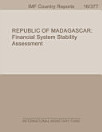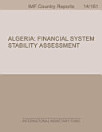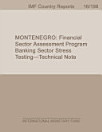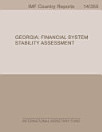Brazil: Financial System Stability Assessment
International Monetary Fund. Monetary and Capital Markets Department
2018年11月 · International Monetary Fund
電子書
96
頁數
report評分和評論未經驗證 瞭解詳情
關於這本電子書
Since the Brazil 2012 FSAP, the financial system has been stable despite the deep recession. The resiliency of the banking system was supported by high profitability, buoyed by large interest margins. While the financial system has grown since the 2012 FSAP, its structure remains largely unchanged. The system is dominated by large, vertically-integrated financial conglomerates and concentrated in liquid short-term instruments. The public sector continues to play a dominant role in the financial sector, and its interconnectedness. Banks are broadly resilient to severe macrofinancial shocks. Current high profits and capital ratios support the resiliency of banks under a severe stress test scenario. Under the stress scenario, small capital shortfalls result; banks would nevertheless experience reduced income, including from market loss on government bonds, and high credit losses on exposures to the corporate sector which, despite recent improvement, is still vulnerable to shocks. This benign outcome deteriorates if their capital is adjusted for deferred tax assets. Moreover, some banks are exposed to concentration risk. Some actions are still needed to address bank-specific risk profiles to boost their resilience. Banks are generally well-positioned to manage short-term and medium-term liquidity pressures and interbank contagion seems limited.
為這本電子書評分
請分享你的寶貴意見。
閱讀資訊
智能手機和平板電腦
手提電腦和電腦
你可以使用電腦的網絡瀏覽器聆聽在 Google Play 上購買的有聲書。
電子書閱讀器及其他裝置
如要在 Kobo 等電子墨水裝置上閱覽書籍,你需要下載檔案並傳輸到你的裝置。請按照說明中心的詳細指示,將檔案傳輸到支援的電子書閱讀器。








